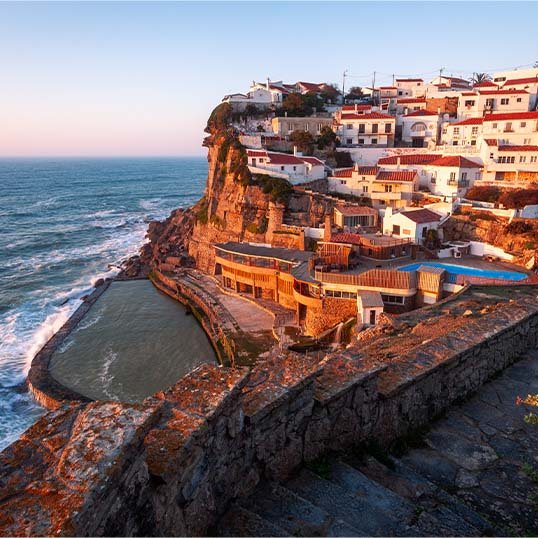Attractions
The origin of the stones of the Portuguese sidewalk was due to a rhino
If you see it from above, Largo do Chiado, in Lisbon, looks like a lace rosette. White stone dotted with black stone, converging to the center, with the statue of the poet of 16th-century António Ribeiro Chiado, and cut by the rails of the tram 28. It is one of the most emblematic pieces of the Portuguese sidewalk, an integral part of the history of one of the symbols of urbanism in Portugal.
The true history of the Portuguese sidewalk
Created in the 15th century, in Lisbon, it is said that the purpose of Portuguese sidewalk was to prevent a parade of a rhino through the city without having mud on the legs... yes, exactly! This exotic animal in the eyes of a European of that time was brought from the East by Afonso de Albuquerque and offered to King D. Manuel II. The king, extremely pleased, called it Ganga and lodge it in Torre de Belém. And from that on, the rhino joined the annual procession where the monarch used to present his wealth to the people.
So that Ganga did not muddy the places of the parade, the king ordered that they were covered with stone, in this case, the granite which he ordered from the north of the country — it is told that this work was too expensive due to the transport of the stone, and it took some time for the sidewalk to become popular. By its popularity, Ganga was precisely the rhino that the king offered to Pope Leon X and the one that Albrecht Dürer painted in 1515. This famous rhino, thus, contributed in many ways to West art.
However, as we know it, the Portuguese sidewalk arose in the 19th century and become one of the most beautiful forms of urban paving. Walks, squares, and many public spaces are covered with pieces of asymmetric limestone laid out on the floor in a kind of puzzle that can have an endless series of decorative motifs.
In fact, creativity is the limit for this type of pavement, which became popular all over the country and was exported to the existing Portuguese colonies at the time, coveted as an ex-libris of the art of well ornamenting the public space. From Rossio, a pioneer square on a big scale, to the narrow alleys of the Castle, passing through Restauradores, where the statue is honoring the artist, the sidewalk is a mark of the country that challenges, however, the balance of some pedestrians. Slippery, the enemy of the high heels, it creates slopes with the use; but is easily recoverable and permeable to rain, which facilitates the flow of water.
The Portuguese sidewalk is so important for the country and even worldwide that, in 2016, the Lisbon City Council began the process of applying it to the list of Intangible Cultural Heritage of Humanity.


